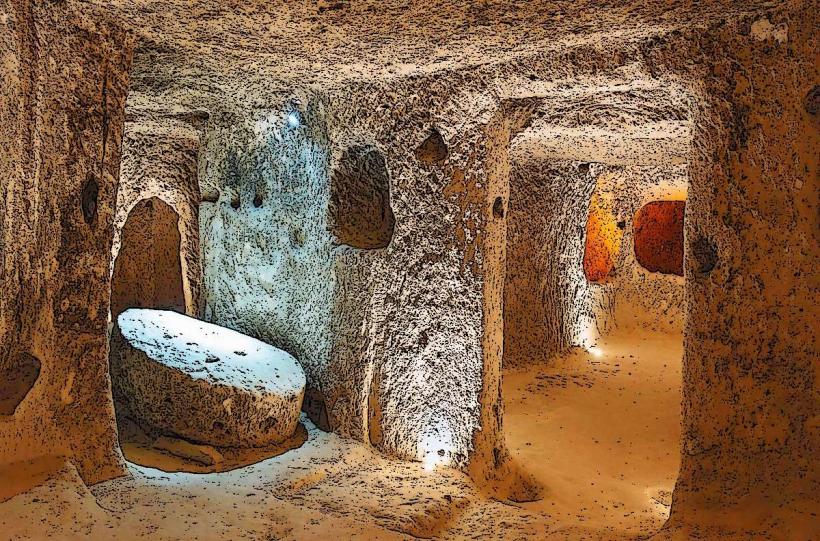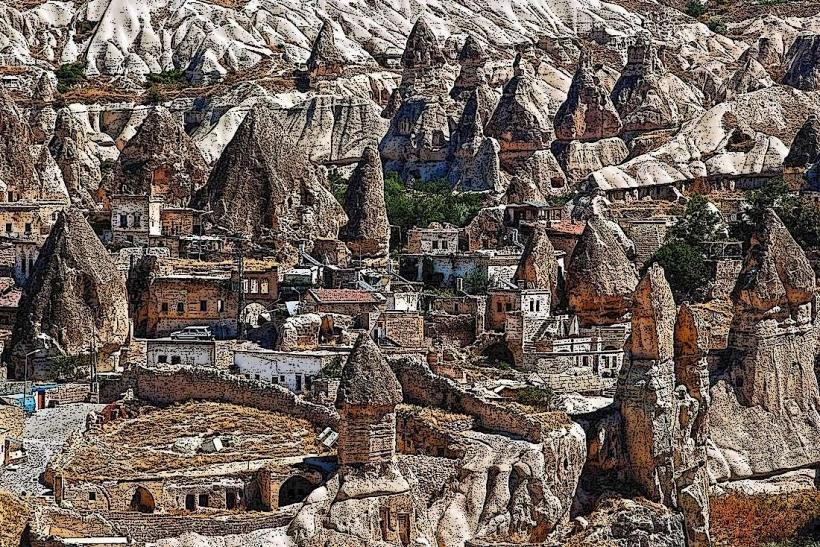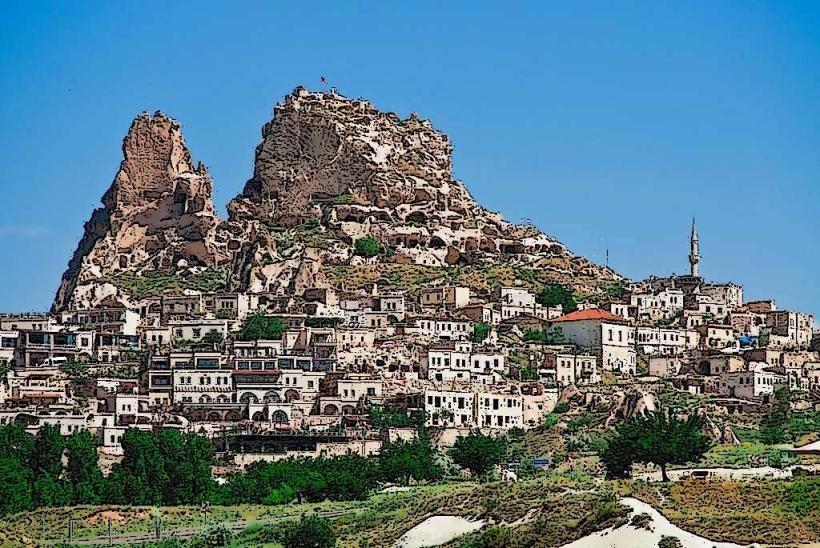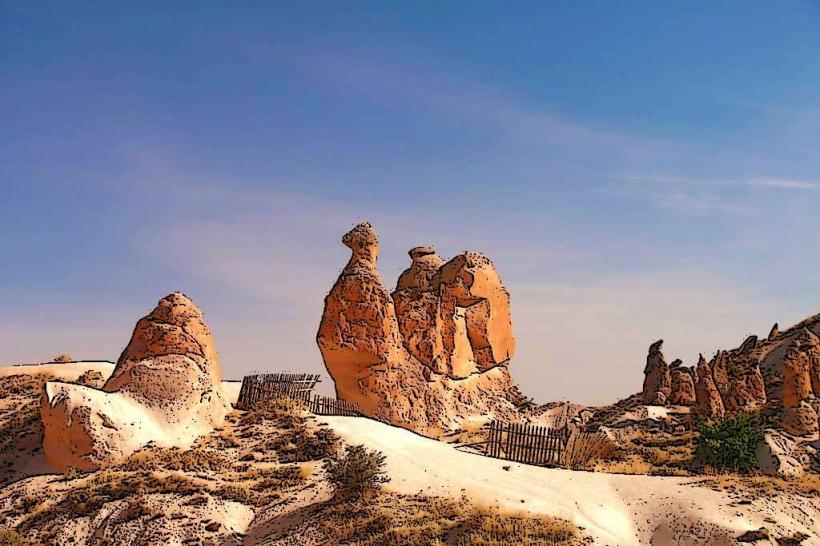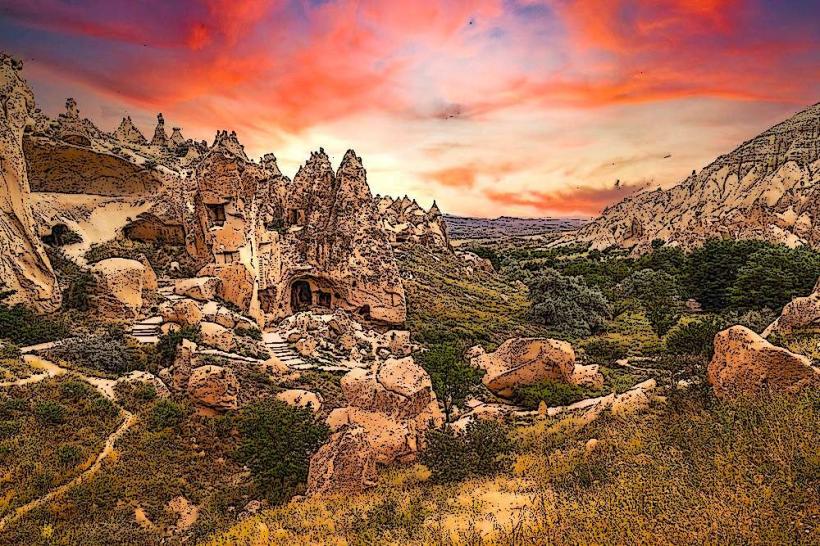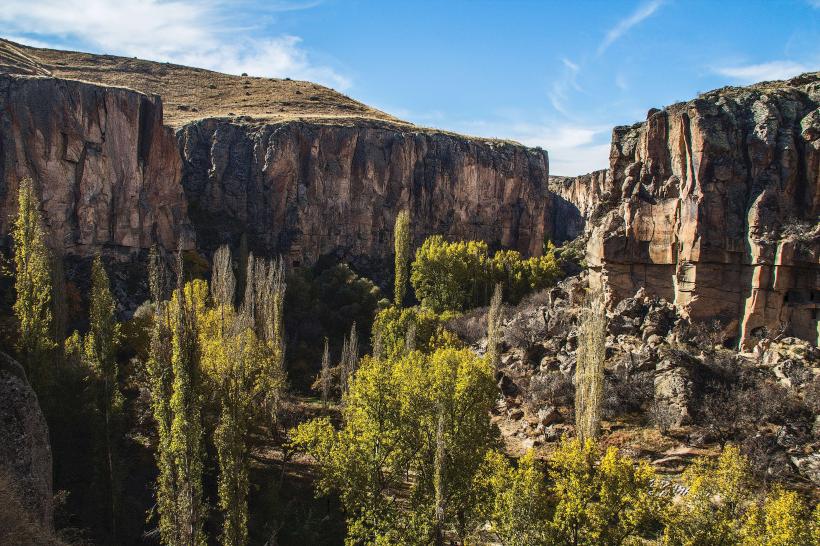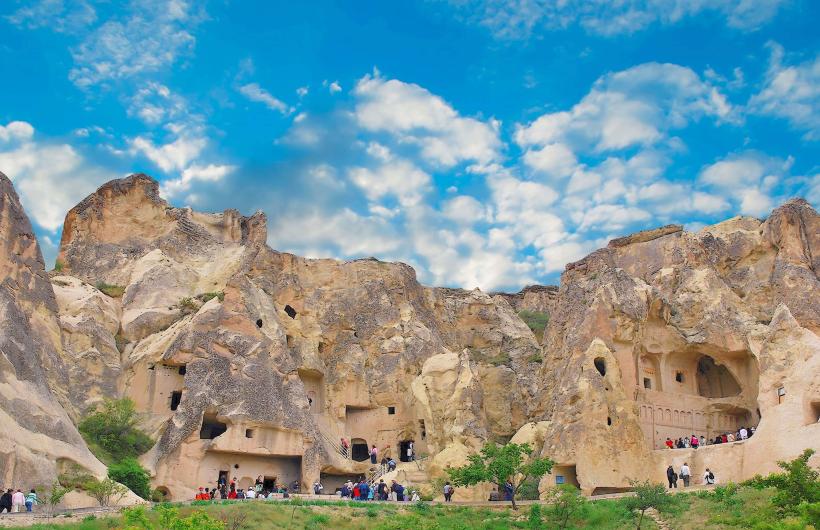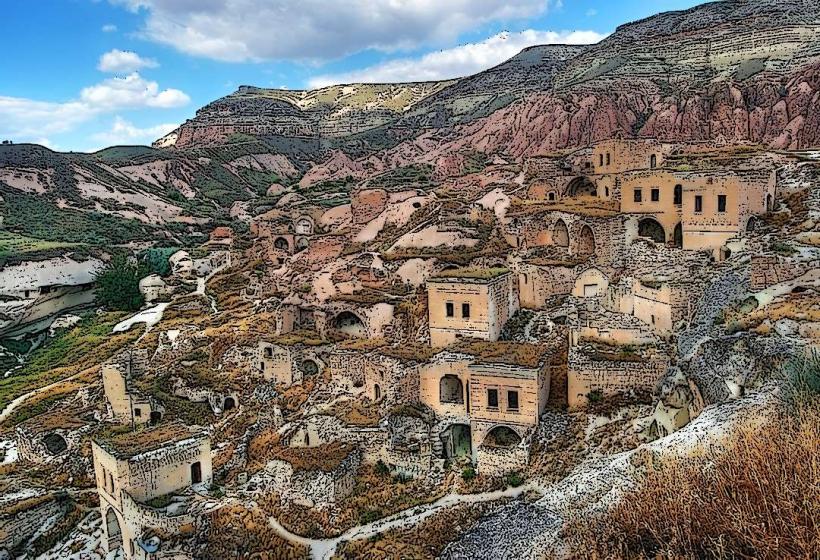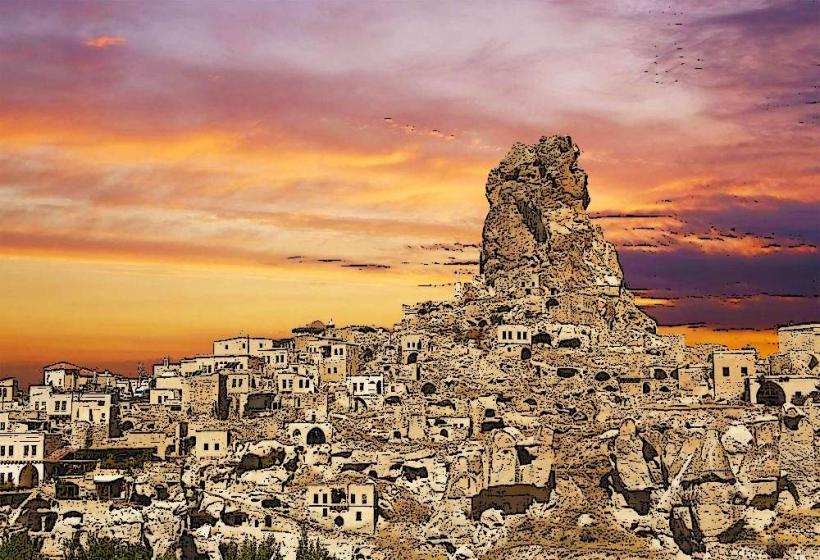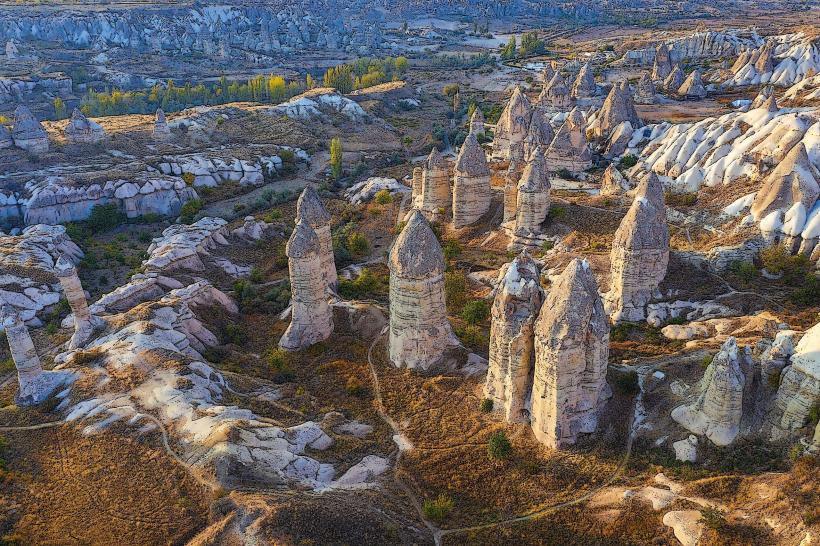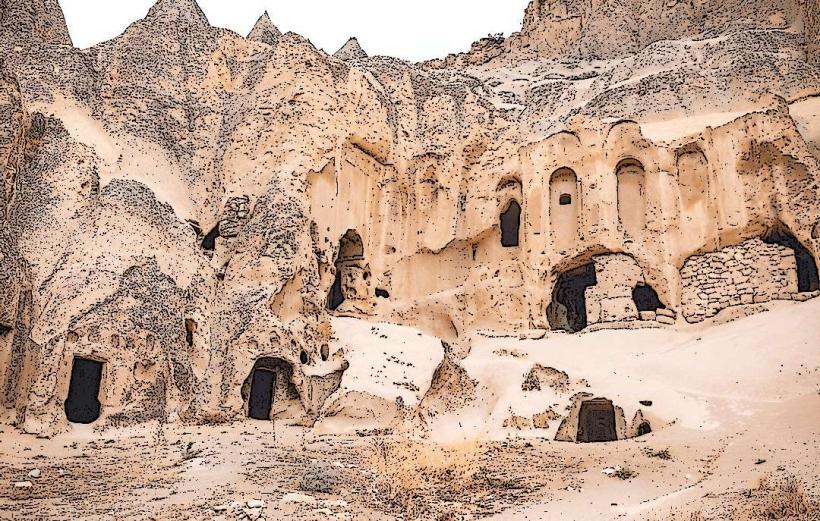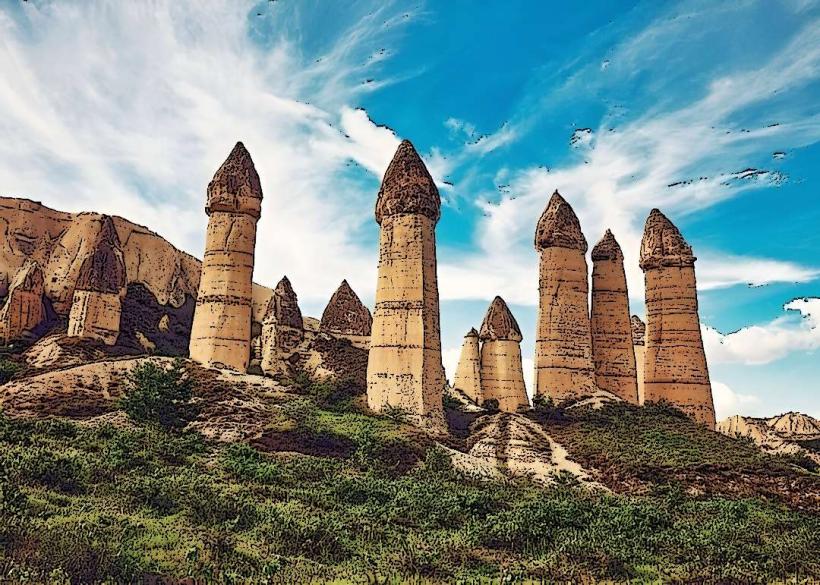Information
Landmark: Pasabag (Monks Valley)City: Cappadocia
Country: Turkey
Continent: Asia
Pasabag (Monks Valley), Cappadocia, Turkey, Asia
Overview
Pasabag, or Monks Valley, is among Cappadocia’s most celebrated sights, where tall stone spires rise like giant mushrooms against the clear Turkish sky, besides just outside Zelve and a short drive from Göreme, Pasabag draws visitors with its striking fairy chimneys-towering rock spires shaped by centuries of wind and rain.What makes the valley stand out is its rich history, striking rock formations, and the centuries-aged monastery that gave it its name, to boot pasabag means “Pasha’s Vineyard” in Turkish, yet travelers also acknowledge it as Monks Valley, named for the quiet stone hermitages carved into its towering fairy chimneys.The valley draws its meaning from towering cliffs and quiet streams, as well as centuries of monastic life etched into its stone walls, in addition monastic Life: The valley got its name, “Monks Valley,” after Christian monks once sought refuge here, especially in the Byzantine era, carving quiet chapels into the soft rock.The monks hollowed tiny cells and chapels into the soft stone of the fairy chimneys, where they lived apart, surrounded by silence and prayer, consequently carved into the stone, these dwellings gave the monks a quiet refuge, far from the clamor of everyday life.Saint Simeon, a revered Christian hermit, is one of Pasabag’s most famous figures, said to have lived here in solitude during the 5th or 6th century, with only the wind and stone for company, moreover drawn by the valley’s quiet, he carved a minute chapel and a home into one of the pale stone fairy chimneys, where, they say, he lived for years.Today, the valley quietly recalls the region’s Christian monastic roots, like the faint echo of bells drifting through the morning air, consequently geological Significance: In Pasabag, the fairy chimneys rise like stone towers, shaped over centuries by wind and rain slowly wearing the rock away.Over millions of years, wind and water carved the volcanic tuff into tall, cone-shaped spires, each topped with a hard cap of stone that clinks under your hand, in addition these rocky spires rise like no region else in Cappadocia, a signature mark on its sweeping, sunlit valleys.In Pasabag, the fairy chimneys rise like tall, weather-worn pillars, some crowned with stone caps, and they’re among the most unforgettable sights in all of Cappadocia, after that a few of the fairy chimneys wear double, even triple, stone caps, like stacked hats, giving them an unmistakable gaze.Tall, mushroom-shaped towers dot the valley, their pale caps catching the light and turning the scene into something that feels almost not of this world, not only that rock-hewn dwellings and chapels dot the fairy chimneys, from tiny monk’s cells carved into cool stone to modest chapels where the walls still hold a faint trace of incense.They’re carved straight into the soft volcanic tuff-a rock you can scrape with a knife-easy to shape, yet it keeps out wind, rain, and heat, consequently visitors can step inside a few of these rooms and catch a glimpse of the monastic life that once thrived here, from the worn stone floors to the quiet, echoing walls.In Pasabag, one of the best‑known landmarks is the Chapel of St, alternatively simeon, its stone walls glowing warm in the afternoon light.Built into one of the jagged fairy chimneys, this chapel likely sheltered early Christian monks as they prayed in its cool, shadowed stone, along with the room is tiny and plain, with a modest altar and the quiet air of humility and solitude that once shaped the monks’ lives, slightly Monastic Cells: Alongside the chapel, Pasabag holds tiny stone rooms where monks once lived, their narrow doors opening to the quiet air, subsequently carved straight into the rock, these modest rooms serve the monks well, giving them a quiet spot for prayer, meditation, and study, where candlelight flickers against the stone walls.Narrow slits and tiny windows let in little more than a pale strip of light, leaving the monks free to devote themselves to a life of strict discipline and quiet spiritual reflection, as a result in Pasabag, some fairy chimneys wear more than one cap, stacked neatly like oversized stone hats, giving them a strange yet unforgettable scan.These rock formations formed when erosion wore away the softer layers, leaving the tougher volcanic cap intact, like a obscure shield holding the pale stone beneath, in addition pasabag, or Monks Valley, draws crowds from all over Cappadocia, and you can wander its winding paths on foot with ease.The valley’s modest enough to wander on foot, so you can take your time admiring the fairy chimneys, shadowy caves, and ancient monastic dwellings carved into the rock, also here’s what to expect on your visit: in Pasabag, you can stroll along a quiet valley path and stand right beside the towering fairy chimneys.Clear paths wind through the valley, their signs easy to spot, guiding you past strange rock shapes and along routes you can follow without worry, alternatively with its strange, towering fairy chimneys and rugged rock shapes, Pasabag ranks among the best places in Cappadocia to snap a perfect shot.Frankly, In the soft glow of early morning or the golden hush of late afternoon, light spills over the landscape, throwing long, dramatic shadows across the jagged rock formations, as a result the fairy chimneys twist into odd, towering shapes that catch the light just right, making every photo feel a little unreal.Monastic Sites: Visitors can step into the rock-carved dwellings and chapels, though inside they’ll find rooms that are plain, with bare stone walls and little ornament, alternatively the Chapel of St. Simeon stands out, offering a clear glimpse into the valley’s monastic past-stone walls still cool to the touch after centuries, on top of that you can reach Pasabag in no time from nearby towns such as Göreme, Zelve, or Avanos, with the road winding past quiet fields and low stone walls.About 10 kilometers, or six miles, from Göreme, it’s easy to reach on a half‑day tour or fold into a longer journey through Cappadocia’s winding valleys, at the same time tourists can park in the modest gravel lot at the valley, but you’ll need to pay an entrance fee.The ideal time to explore Pasabag is in spring, from April to June, or in autumn, between September and October, when the air feels crisp and the valleys glow with soft, golden light, in addition summer in Cappadocia can get scorching, so it’s best to explore at dawn, when the air is cool and the light spills gold over the rock formations, or wait until late afternoon.In spring or autumn, you’ll find fewer people around, and the quiet makes the whole location feel more relaxed-like hearing only the crunch of leaves under your shoes, besides just a few minutes from Pasabag, the Zelve Open-Air Museum reveals a maze of ancient cave homes, churches, and monasteries etched into soft, pale tuff rock.Once a lively cave village, Zelve bustled with life until it was abandoned in the 1950s, and today its honeycombed cliffs give a vivid glimpse into Cappadocia’s past, what’s more Göreme National Park, a UNESCO World Heritage site, shelters ancient cave homes and rock-hewn churches, their cool stone walls still echoing with centuries of history.It’s a great spot to hike dusty trails, wander through hidden ruins, and dive into the fascinating history of early Christianity in the area, while Devrent Valley, with its strange rock spires shaped like camels, dolphins, and other creatures, is one more spot you can’t miss in Cappadocia.You’ll find it near Pasabag, where the ground twists into shapes so unusual they feel dreamlike, yet still dazzle the eye, subsequently pasabag, or Monks Valley, blends striking rock formations, echoes of its rich history, and a quiet calm that settles over you like cool evening air.The fairy chimneys rose from the earth, their stone walls carved into quiet monastic dwellings.
Author: Tourist Landmarks
Date: 2025-09-22



